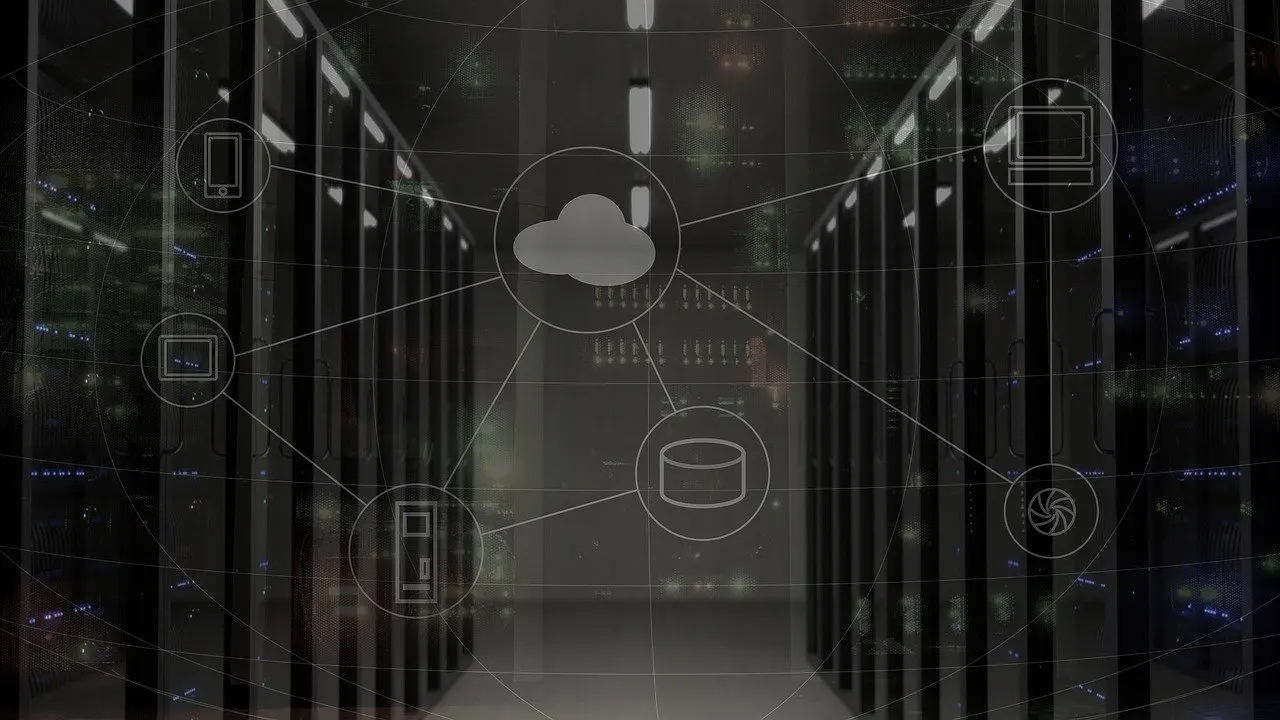As technology continues to advance, so do the risks associated with cyber threats. For small and medium-sized business owners, the consequences of a cyber attack can be devastating, leading to financial loss, reputational damage, and even legal implications. This is why cybersecurity is no longer an option, but a necessity for businesses in today’s interconnected world. In this article, we will delve into the top five reasons why investing in robust cybersecurity measures is crucial for the long-term success and sustainability of your business.
Why Cybersecurity is Important for Business
Protection against Data Breach and Theft
In today’s digital landscape, businesses store a vast amount of sensitive data, including customer information, financial records, and intellectual property. Implementing robust cybersecurity measures helps protect against data breach and theft, preventing unauthorized access to valuable information. By safeguarding data, businesses can maintain the trust of their customers and avoid costly legal and financial consequences.
Prevention of Financial Loss and Disruption
Cyber attacks can have severe financial implications for businesses. From ransomware attacks to financial fraud, the financial loss resulting from a successful cyber attack can be devastating. Investing in cybersecurity measures helps prevent such attacks, minimizing the risk of financial loss and disruption to business operations. By proactively protecting against cyber threats, businesses can ensure their financial stability and continuity.
Safeguarding Business Reputation
A cyber attack can tarnish a business’s reputation, leading to a loss of customer trust and loyalty. News of a data breach or security incident can spread quickly, damaging the perception of a business’s commitment to protecting customer information. By prioritizing cybersecurity, businesses demonstrate their dedication to safeguarding sensitive data, enhancing their reputation and maintaining the trust of their customers.
Compliance with Regulatory Requirements
Many industries have specific regulations and compliance standards regarding data protection and cybersecurity. Failing to meet these requirements can result in legal consequences and hefty fines. By implementing effective cybersecurity measures, businesses can ensure compliance with relevant regulations, protecting themselves from legal liabilities and maintaining a good standing within their industry.
Mitigation of Operational Disruptions
A successful cyber attack can disrupt business operations, leading to downtime, loss of productivity, and increased recovery costs. By investing in cybersecurity, businesses can mitigate the risk of operational disruptions caused by malware, ransomware, or other cyber threats. By maintaining a secure and resilient IT infrastructure, businesses can continue to operate smoothly and minimize the impact of potential cyber incidents.
Consequences of Neglecting Cybersecurity
- Financial Loss: Neglecting cyber security can lead to significant financial loss for businesses. A successful cyber attack can result in stolen funds, unauthorized transactions, or costly legal battles. The expenses associated with recovering from an attack, such as incident response, system restoration, and customer compensation, can be substantial.
- Reputational Damage: A breach in cyber security can severely damage a business’s reputation. News of a data breach or security incident can spread quickly, eroding customer trust and loyalty. The negative publicity and loss of credibility can have long-lasting effects on a business’s brand image and customer perception.
- Legal Consequences: Neglecting cyber security can expose businesses to legal liabilities. Depending on the industry and location, businesses may be subject to various data protection and privacy regulations. Failing to comply with these regulations can result in legal consequences, including fines, penalties, and lawsuits.
- Operational Disruption: Cyber attacks can disrupt business operations, leading to downtime, loss of productivity, and disruption of critical services. This can have a cascading effect on the overall efficiency and profitability of the business. Recovering from an attack and restoring normal operations can be time-consuming and costly.
- Loss of Customer Trust: Customers expect businesses to protect their personal and financial information. Neglecting cyber security can lead to a loss of customer trust and loyalty. Customers may choose to take their business elsewhere, resulting in a decline in revenue and market share. Rebuilding customer trust after a breach can be challenging and time-consuming.
What are the Most Common Cybercrime Threats to Businesses and Organizations?
Phishing Attacks
Phishing attacks are one of the most common cybercrime threats to businesses and organizations. In a phishing attack, cybercriminals use deceptive tactics, such as fraudulent emails or websites, to trick individuals into revealing sensitive information like passwords, credit card details, or login credentials. These attacks can lead to data breaches, financial loss, and unauthorized access to critical systems.
Malware Infections
Malware, including viruses, ransomware, and spyware, poses a significant threat to businesses. Malicious software can infiltrate systems through various means, such as infected email attachments, compromised websites, or malicious downloads. Once inside a network, malware can cause data loss, system damage, and unauthorized access, potentially leading to financial loss, operational disruptions, and compromised customer data.
Insider Threats
Insider threats refer to malicious activities carried out by individuals within an organization who have authorized access to sensitive data or systems. This can include employees, contractors, or partners who misuse their privileges for personal gain or to harm the organization. Insider threats can result in data breaches, intellectual property theft, and reputational damage, making it crucial for businesses to implement strict access controls and monitoring mechanisms.
Distributed Denial of Service (DDoS) Attacks
DDoS attacks aim to overwhelm a target’s network or website by flooding it with a massive volume of traffic. This flood of traffic makes the targeted system inaccessible to legitimate users, causing service disruptions and financial loss. DDoS attacks can be launched by cybercriminals or even competitors, and businesses need robust network infrastructure and mitigation strategies to defend against such attacks.
Social Engineering
Social engineering involves manipulating individuals to gain unauthorized access to systems or sensitive information. Cybercriminals may use techniques like impersonation, pretexting, or baiting to deceive employees into revealing confidential information or performing actions that compromise security. Social engineering attacks can lead to data breaches, financial fraud, and unauthorized access to critical systems.
Understanding these common cybercrime threats is essential for businesses and organizations to develop comprehensive cybersecurity strategies. By implementing preventive measures, such as employee training, robust security protocols, and regular system updates, businesses can better protect themselves against these threats and minimize the potential impact of cyber attacks.
Are Cloud Services and Encryption Necessary for Businesses?
Cloud services and encryption are not just necessary but crucial for businesses in today’s digital landscape. With the increasing reliance on networks and the internet for business operations, the need to securely store and transmit data has become paramount. Cloud services offer businesses the flexibility, scalability, and cost-effectiveness of storing and accessing data remotely. By leveraging cloud services, businesses can reduce the burden of maintaining on-premises infrastructure while ensuring data availability and disaster recovery capabilities.
Encryption, on the other hand, plays a vital role in protecting sensitive information from unauthorized access. As data travels across networks and the internet, it is vulnerable to interception and exploitation by cybercriminals. Encryption transforms data into an unreadable format, making it unintelligible to unauthorized individuals. This ensures that even if data is intercepted, it remains secure and confidential.
When Should Businesses Prioritize Cybersecurity?
Businesses should prioritize cybersecurity from the very beginning, as soon as they start their operations. Cybersecurity should be considered a fundamental aspect of business planning and strategy. By prioritizing cybersecurity from the outset, businesses can establish a strong foundation for protecting their valuable assets, data, and systems. This proactive approach allows businesses to implement robust security measures, such as firewalls, secure networks, and access controls, to safeguard against potential threats.
Additionally, businesses should prioritize cybersecurity during times of growth and expansion. As businesses evolve and scale, their digital footprint expands, making them more susceptible to cyber-attacks. This is especially true when businesses adopt new technologies, such as cloud computing, Internet of Things (IoT) devices, or remote work arrangements. Prioritizing cybersecurity during these critical periods ensures that businesses can adapt their security measures to address emerging threats and vulnerabilities, protecting their operations, reputation, and customer trust.
How Can Cybersecurity Impact Business Reputation?
Cybersecurity can have a significant impact on business reputation. A data breach or security incident can lead to negative publicity, erode customer trust, and damage the perception of a business’s commitment to protecting sensitive information. The loss of customer trust and loyalty can result in a decline in revenue, market share, and long-term damage to the business’s reputation. On the other hand, prioritizing cybersecurity and demonstrating a strong commitment to protecting customer data can enhance business reputation, instill confidence in customers, and differentiate the business from competitors.
5 Tips for Businesses New to Cybersecurity
- Conduct a comprehensive risk assessment: Start by identifying the potential cybersecurity risks and vulnerabilities specific to your business. This assessment will help you understand your security gaps and prioritize your efforts accordingly.
- Implement strong password policies: Enforce the use of complex, unique passwords for all accounts and systems. Consider implementing multi-factor authentication for an added layer of security.
- Educate employees on cybersecurity best practices: Train your employees on how to identify and respond to common cyber threats, such as phishing emails and suspicious attachments. Regularly update them on emerging threats and provide ongoing cybersecurity awareness training.
- Regularly update and patch software: Keep all software, including operating systems and applications, up to date with the latest security patches. Regularly check for updates and apply them promptly to protect against known vulnerabilities.
- Backup and disaster recovery planning: Regularly backup your critical data and systems to ensure you can recover in the event of a cyber incident. Test your backups periodically to ensure they are functional and secure. Develop a comprehensive disaster recovery plan to minimize downtime and data loss.
Conclusion
In conclusion, cybersecurity is of utmost importance for businesses, regardless of their size or industry. The ever-evolving cyber threat landscape poses significant risks to data, finances, reputation, and customer trust. By prioritizing cybersecurity, businesses can protect themselves against data breaches, financial loss, and operational disruptions. Implementing robust security measures, such as cloud services, encryption, and employee training, can help businesses mitigate the risks associated with common cybercrime threats. By investing in cybersecurity, businesses can safeguard their valuable assets, maintain customer trust, and ensure long-term success in today’s interconnected digital world.
Final Thoughts
Strengthen your business’s resilience against cyber threats by partnering with Buzz Cybersecurity, the foremost provider of customized defense solutions. Our holistic range of services, spanning managed IT, state-of-the-art cloud solutions, and cutting-edge ransomware protection, offers unparalleled security for businesses in California and surrounding regions. With our team of industry experts at your side, you can confidently navigate the complex world of cyber dangers, allowing your organization to thrive while we safeguard your digital assets.
Sources
- https://www.canada.ca/en/financial-consumer-agency/services/protect-financial-information-data-breach.html
- https://www.linkedin.com/pulse/industry-regulations-data-protection-compliance-invexic
- https://hbr.org/2023/05/the-devastating-business-impacts-of-a-cyber-breach
- https://www.blackberry.com/us/en/solutions/endpoint-security/ransomware-protection/insider-threats
- https://en.wikipedia.org/wiki/Social_engineering_(security)




